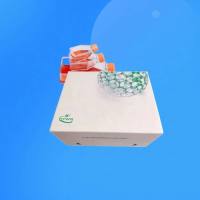Electroporation of Cardiac Cells
互联网
612
High-intensity, pulsed electrical shock is deliberately applied to the heart in the clinical setting for the treatment of cardiac arrhythmia, e.g., during defibrillation. However, overdoses of electrical shock can result in toxic instead of therapeutic effects (1 ). Successful defibrillation is thought to occur when the bulk of the heart is subjected to a minimum level of potential gradient (2 ). Unfortunately, it is difficult to achieve a uniform intensity throughout the heart (3 ) or even underneath the shock electrode (4 ). In practice, the intensity will be much higher at the electrodes, by perhaps as much as 25 times the minimum level of gradient (5 ,6 ). At high levels of shock, a multitude of pathological effects can arise in these regions of high potential gradients. For example, morphological and ultrastructural changes in tissue are well documented (7 ). Another major consequence of the resulting myocardial injury in the heart is production of arrhythmias (8 ,9 ), which may result in unsuccessful defibrillation. It is well known that in defibrillation success curves, there is an optimal level of shock above which the success for defibrillation decreases (10 ). Undesirable side effects include conduction block (11 ), loss of pacemaker activity (9 ), decreased level of excitability (12 ), idioventricular beats (13 ), and runs of ventricular tachyarrhythmia (6 ).








